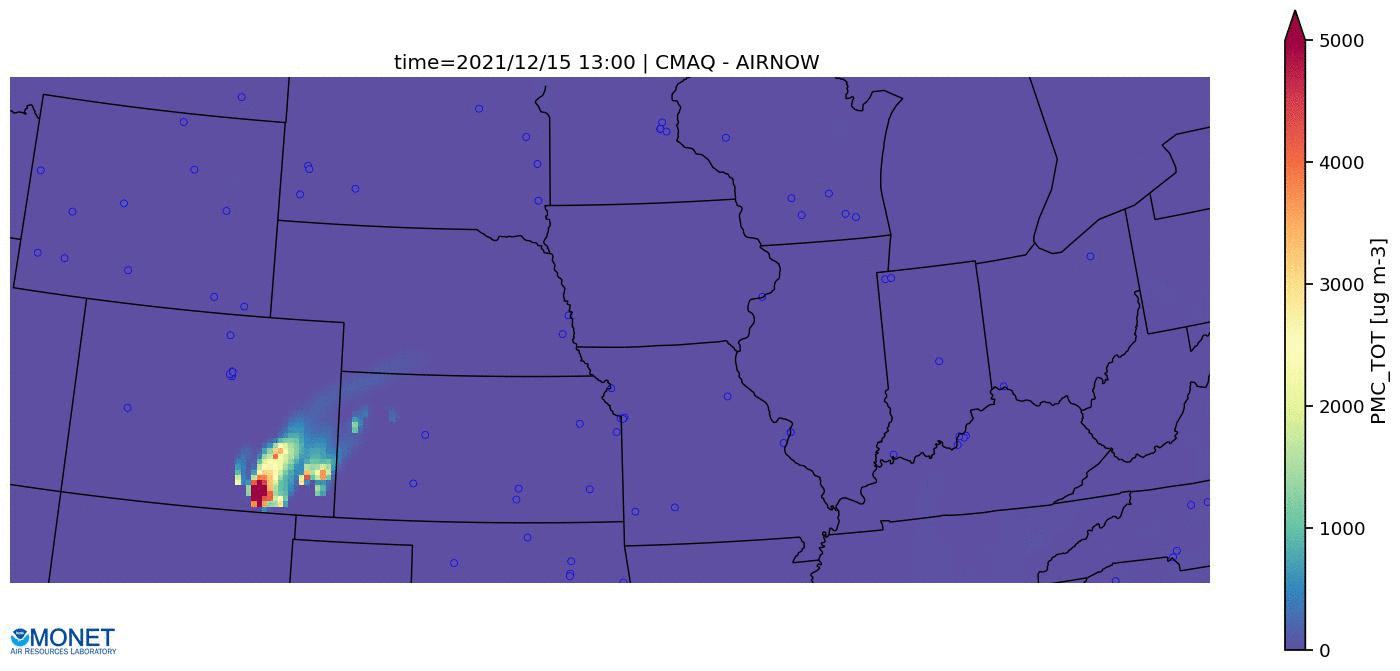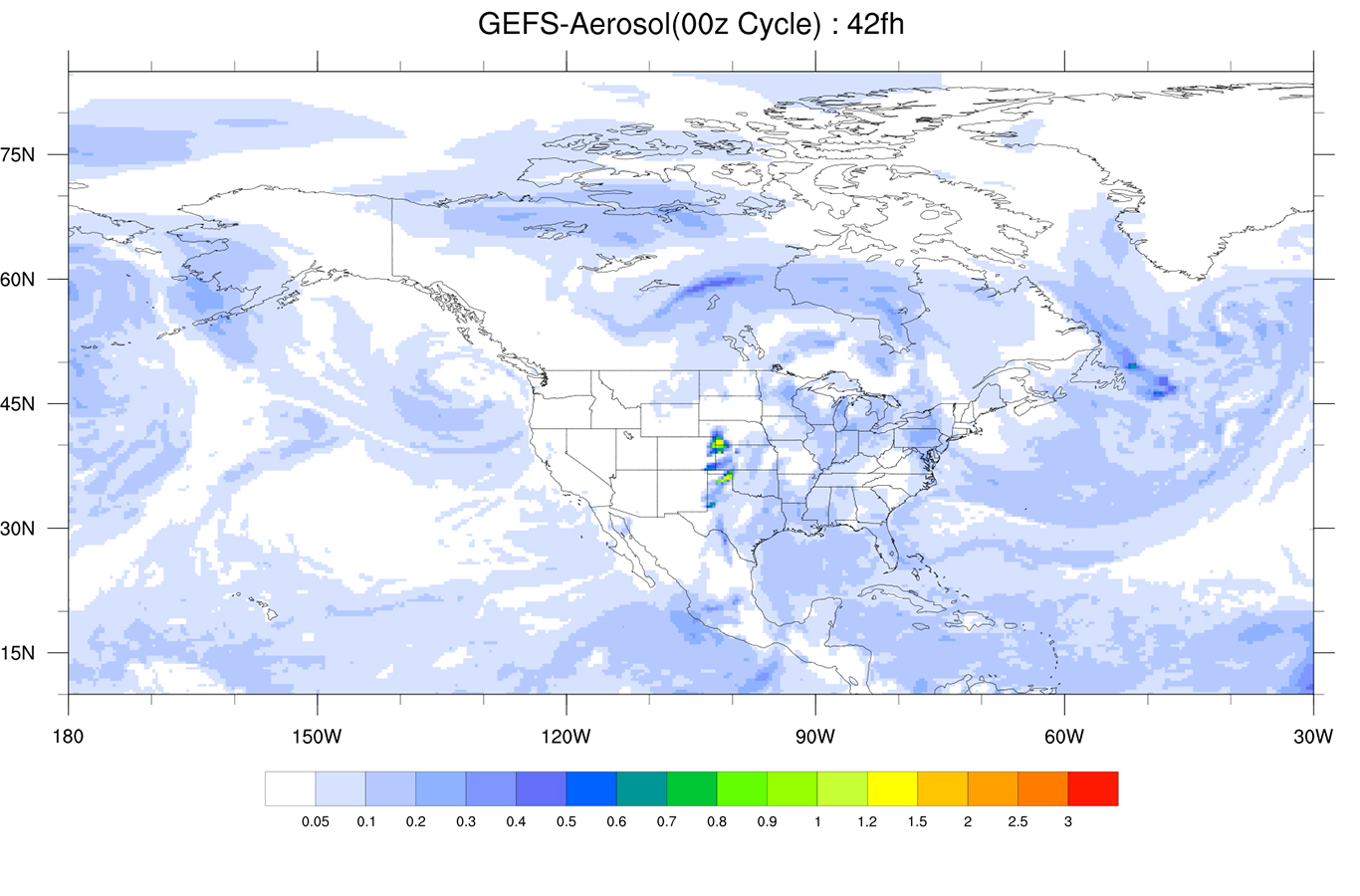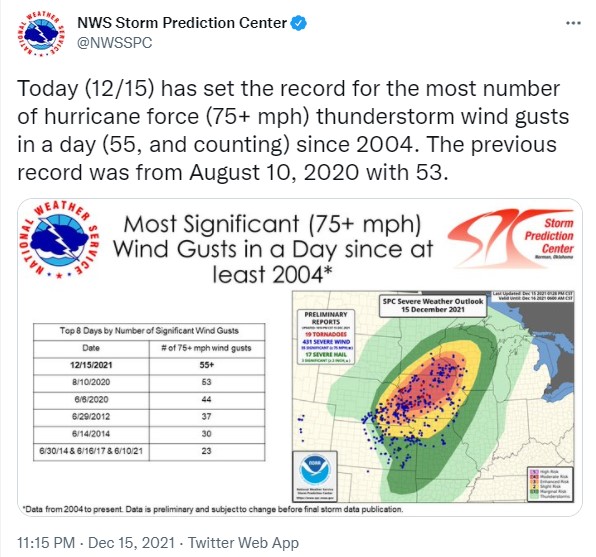New Dust Forecast Model Excels in Predicting Recent Dust Storms
December 21, 2021
December 21, 2021
In December 2021, some regions of the US experienced record breaking weather patterns with deadly tornados and damaging winds. An Extreme Wind Event on December 14-16 brought winds up to 100 mph to parts of southern Colorado towns such as Pueblo and Manitou Springs. Intense dust storms, sometimes called a haboob, raced across the dry plains in Colorado and Kansas to produce widespread blowing dust over much of the region.
This past July, NOAA Air Resources Laboratory (ARL) and partners provided significant updates to the Air Quality Model that NOAA’s National Weather Service (NWS) uses to provide air quality forecast guidance across the US. Under the revised National Air Quality Forecasting Capability (NAQFC), the NWS forecasts for air quality now provide 72 hours of guidance on ozone, smoke, dust and fine particulate matter (PM2.5) in the air we breathe. Included with that update was a revised dust model, called FENGSHA; FENGSHA is an English analog of the Mandarin term for wind-blown dust.
The Air Resources Laboratory (ARL) developed FENGSHA wind-blown dust emission model is also operational in NOAA’s Global Ensemble Forecast System with Aerosols (GEFS-Aerosols) and has also been implemented into the next generation joint NOAA-NASA UFS-Aerosol global aerosol model. The modeling of mineral dust emissions is complex and a great deal of effort has been made to pinpoint source regions and identify processes that result in dust being lofted into the atmosphere. FENGSHA has been developed over the past several years based on data obtained by ARL scientists using satellite, wind tunnel and field measurements.
“The FENGSHA Model performed extremely well for this event, capturing the severe wind driven event. NAQFC was able to represent this storm not only in magnitude but also in time and location,“ said Barry Baker, an ARL research scientist who led the NAQFC enhancement project. “Forecasting the location and timing is particularly difficult but FENGSHA was able to give advanced warning of this event accurately.“

The life cycle of atmospheric aerosols such as dust is important for human health and agriculture. Aerosols also have direct and indirect effects on meteorology, atmospheric chemistry and ultimately the global energy budget. Mineral dust is a major contributor to the atmospheric aerosol burden, and some estimates suggest it represents the largest single contributor globally.
“Dust storms are an underappreciated weather hazard,” said Daniel Tong, an ARL affiliated scientist and associate professor at George Mason University who developed the original version of the FENGSHA model. “Windblown dust is responsible for tens of thousands of car accidents in the United States, due to poor visibility and slippery road surfaces during a dust storm.” Earlier this year, eight people died in a 25-car pileup during a single dust event in Utah.
The impact of dust storms on human health is also significant, added Dr. Tong: “Dust is also a common component of air pollution. What is unique about the dust in the Americas, including the Southwestern US, is that it transports a soil-living fungus called Coccidioides. This pathogen, once inhaled by humans or animals, can cause Valley fever infection.”
Just like wildfires, dust storms have been increasing in the western United States and are projected to rise further as our climate changes. The December dust storms are unique not only because of the size, but also their location and origin: these plains are the birthplace of the Dust Bowl in the 1930s.
“This is really worrisome for some scientists who speculate another ‘Dust Bowl’ may be coming,” said Daniel Tong. “While the jury is still out, it is critical to develop and continue improving our predictive capability of dust storms to protect the public from the harms of the dust hazard.”

